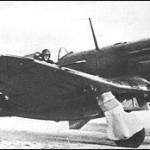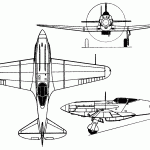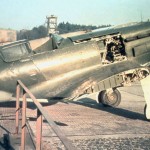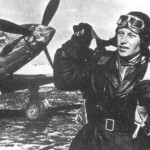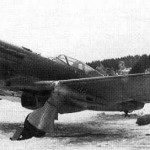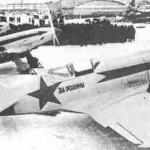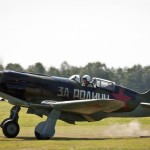
The MiG-3 was born out of design problems with the MiG-1 experimental fighter. It was faster than its contemporaries, and it was meant to fight at high altitudes, where its speed would be vital. In this sense, it can be compared to the fast interceptor jets would arise during the cold war, including the American F-106 “Delta Dart” and the Soviet MiG-25.
It is similar in another sense: All three of these aircraft were built to fight a war that would never come. The F-106 and MiG-25 were designed to be extremely fast, climb extremely high, and take out enemy nuclear-capable bombers before they could wipe out entire cities back home. This, of course, never came to fruition.
Similarly, the MiG-3 was designed to fly at high altitudes and engage the enemy, using speed as its weapon. The the war that came to the Eastern Front was a low-altitude war. It was a grittier, less streamlined role that the MiG found itself pressed into service for in 1941, and the airplane was ill-equipped to dogfight at low altitude. The Soviets also tried, and failed, to convert the MiG-3 into a fighter-bomber. The MiG-3 was an interceptor, and it was at a serious disadvantage against Germany’s rough and tumble Messerschmitt Bf 109.
The MiG-3 was designed, on paper and in wind tunnels, to be an improvement over the MiG-1. Changes included improved cooling, more ordinance, a second oil tank under the engine, streamlined supercharged air intakes, an armored cockpit, improved instrument layout, upgraded gunsight, and underwing hardpoints that added nearly 500 lbs. of increased ordinance carrying ability. On paper, it was a vast improvement. In reality, the MiG-3 was 500 lbs. heavier than the MiG-1, and safety oversights led to inferior airplanes being delivered to Red Army Air Forces units.
In service in WWII, the MiG-3 was difficult for veteran pilots to tame and deadly in the hands of an inexperienced pilot. It also faced a primary opponent in the Bf 109 that was faster at low altitude, more maneuverable, and more than 1,300 lbs. lighter.
The MiG-3 entered service just before the German Invasion, but the state of war that existed during this time meant that Soviet fighter pilots did not have time to properly train on the new, heavier fighter. VVS pilots were accustomed to the Polikarpov I-16, a light, highly maneuverable fighter. While it could turn on par with a Bf 109, it was older and had less engine power, reducing its rate of climb, dive, and top speed compared to the German fighter. None of that would soon matter, anyway. When Germany invaded the Soviet Union during Operation Barbarossa in June 1941, the Luftwaffe focused its attention on I-16 bases. Roughly 1/3 of the Red Army Air Forces’ 4,226 aircraft just prior to Operation Barbarossa were I-16’s. Within 48 hours of the Luftwaffe assault on their bases, more than half of all Soviet I-16s were destroyed on the ground or in the air.
The world got just the slightest taste of the MiG-3’s potential in June 1941, just prior to Operation Barbarossa. Pilots from the VVS’s 4th Fighter Regiment shot down three German high-altitude reconnaissance aircraft, but this was about the extent of high-altitude combat.
The MiG would be retired before the end of WWII, largely supplanted by the Yakovlev Yak-1, which was much better suited for low-altitude combat.
Few MiG-3 survivors exist today. Some have been restored and are in private collections and museums. Some are flown in airshows all over the world.
Specifications
General
Crew: One
Length: 27 ft. 1 in.
Wingspan: 33 ft. 5 in.
Height: 10 ft. 9 7/8 in.
Empty weight: 5,965 lbs.
Loaded weight: 7,415 lbs.
Engine: 1 × Mikulin AM-35A liquid-cooled V-12, 1,350 hp
Performance
Maximum speed: 398 mph at 25,600 ft
Maximum speed at sea level: 314 mph
Range: 510 mi
Ceiling: 39,400 ft
Armament
- One 12.7 mm UBS machine gun
- Two 7.62 mm ShKAS machine guns
- Up to 220 lbs. of bombs, 2 spray containers for chemicals, gas or flammable liquids or 6 × 82 mm RS-82 rockets on wind hardpoints
Essential Reading
Online Resources
- Chuck Hawks MiG-3 article — Good history and photos.
- Sovietwarplanes.com — Great photo section
- Warbirdresourcegroup.org — Limited information and some photos
